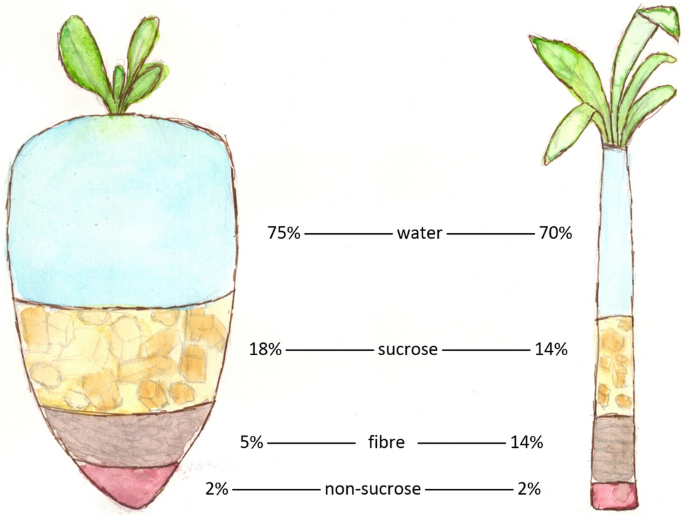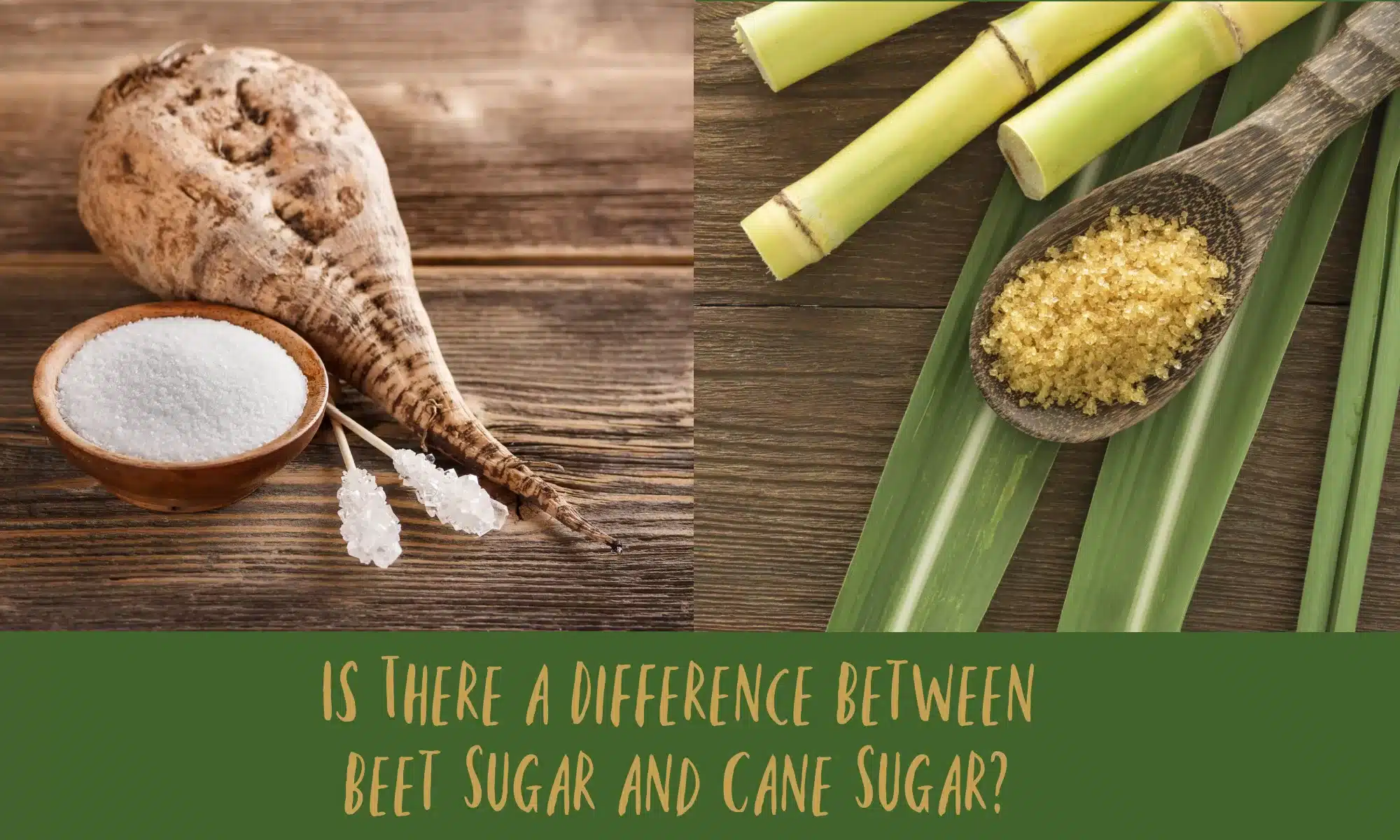Sugar beet vs sugar cane: Best uses in everyday life
Understanding Sugar Beet Vs Sugar Cane: a Deep Dive Into Their Handling and Applications
The contrast in between sugar beet and sugar cane exposes crucial differences in their handling and usage. Each crop has distinct growing techniques that affect its geographical circulation. Sugar beetroots are largely refined into granulated sugar for numerous food items, while sugar cane is frequently made use of in beverages. Comprehending these differences clarifies their roles in the food sector and their economic relevance. Yet, the more comprehensive effects of their growing and handling require additional expedition.
Overview of Sugar Beet and Sugar Cane
Sugar beet and sugar cane are 2 key sources of sucrose, each contributing substantially to the international sugar supply. Sugar beet is an origin veggie, generally harvested in cooler climates, while sugar cane is a high lawn that prospers in warmer exotic and subtropical regions. The processing of sugar beet involves cleaning, cutting, and removing juice, complied with by purification and crystallization. On the other hand, sugar cane processing consists of crushing the stalks to extract juice, which is after that cleared up and concentrated into sugar crystals.
Both crops are rich in sucrose, but their composition varies somewhat, with sugar cane typically having a higher sugar material. Each resource also plays a role in biofuel production, with sugar beet commonly utilized for ethanol. While both are vital for various applications, their distinctive growth requirements and handling methods influence their respective contributions to the sugar market.
Geographical Distribution and Farming Conditions
Sugar beet and sugar cane are grown in unique geographical regions, affected by their details climate and dirt requirements. Sugar cane prospers in tropical environments, while sugar beet is better fit for temperate zones with cooler temperatures. Understanding these farming problems is essential for optimizing manufacturing and making certain high quality in both crops.
International Growing Regions
While both sugar beet and sugar cane are essential sources of sugar, their worldwide growing areas differ markedly due to climate and soil demands. Sugar beet thrives mostly in temperate areas, with significant production focused in Europe, The United States And Canada, and components of Asia. These locations typically include well-drained, abundant soils that sustain the crop's development cycle. On the other hand, sugar cane is mainly cultivated in exotic and subtropical areas, with major manufacturing centers located in Brazil, India, China, and Thailand. This crop embellishments in warm, moist environments that facilitate its development. The geographical distribution of these two plants highlights the flexibility of sugar cane to warmer climates, while sugar beet stays dependent on cooler, pleasant problems for peak growth.
Environment Requirements
The climate requirements for sugar beet and sugar cane differ markedly, reflecting their adjustment to unique environmental conditions. Sugar beet flourishes in warm climates, requiring cool to mild temperature levels, preferably ranging from 15 ° C to 20 ° C. It is sensitive to frost and advantages from well-distributed rains throughout its growing period. This crop is commonly cultivated in regions such as Europe and North America.
Alternatively, sugar cane embellishments in tropical and subtropical climates, preferring warmer temperature levels in between 20 ° C and 30 ° C - Sugar beet vs sugar cane. It calls for bountiful sunshine and constant rains, making it fit to areas like Brazil, India, and Southeast Asia. The contrasting climate choices of these plants significantly influence their geographical circulation and agricultural methods
Dirt Preferences
Although both sugar beet and sugar cane need specific soil conditions to thrive, their preferences differ significantly. Sugar beets thrive in well-drained, fertile soils abundant in organic matter, with a pH ranging from 6.0 to 7.5. These problems are typically found in pleasant areas, especially in Europe and The United States And Canada. In contrast, sugar cane chooses deep, fertile dirts with exceptional drainage and a slightly acidic to neutral pH (6.0 to 7.0) This plant is generally cultivated in exotic and subtropical environments, such as Brazil, India, and Australia. The geographical circulation of these plants shows their dirt preferences, as sugar beetroots are suited for cooler climates, while sugar cane grows in warmer, a lot more humid environments.
Harvesting and Processing Techniques
In analyzing the harvesting and handling methods for sugar beet and sugar cane, distinctive methods emerge for each and every plant. The comparison of gathering techniques exposes variants in efficiency and labor demands, while extraction techniques highlight distinctions in the initial handling stages. In addition, understanding the refining procedures is necessary for assessing the quality and yield of sugar generated from these two resources.
Collecting Methods Contrast
When considering the harvesting techniques for sugar beet and sugar cane, distinctive techniques arise that mirror the distinct attributes of each plant. Sugar beet collecting normally entails mechanical methods, utilizing specialized harvesters that root out the beetroots from the ground, getting rid of tops and dirt while doing so. This technique enables for efficient collection and lessens plant damages. In comparison, sugar cane harvesting can be either manual or mechanical. Manual harvesting involves workers cutting the stalks close to the ground, while mechanical harvesting uses large makers that cut, chop, and collect the cane in one procedure. These differences in gathering methods highlight the flexibility of each crop to its expanding atmosphere and the farming methods common in their particular areas.
Extraction Strategies Introduction
Removal methods for sugar production vary significantly in between sugar beet and sugar cane, showing their unique attributes and processing requirements. Sugar beets are generally harvested utilizing mechanical farmers that cut the roots from the ground, followed by cleaning to get rid of dirt. The beets are after that cut right into thin pieces, referred to as cossettes, to facilitate the removal of sugar via diffusion or warm water removal. In contrast, sugar cane is typically harvested by hand or device, with the stalks reduced short. After harvesting, sugar cane undertakes squashing to extract juice, which is after that clarified and concentrated. These removal techniques highlight the unique strategies used based on the resource plant's physical qualities and the wanted efficiency of sugar removal.
Refining Processes Discussed
Refining procedures for sugar from both sugar beet and sugar cane include numerous necessary actions that ensure the last item is pure and suitable for intake. At first, the raw juice removed from either resource undergoes clarification, where impurities are removed making use of lime and heat. Following this, the juice is vaporized to concentrate the sugars. For sugar beets, the process frequently includes carbonatation, while sugar cane might go through an extra simple formation method. When focused, the syrup is subjected to formation, generating raw sugar. The raw sugar is purified through centrifugation and additional refining, resulting in the white granulated sugar frequently discovered on shop shelves. Each action is critical in ensuring product quality and safety for consumers.
Nutritional Profiles and Health Impacts

Health influences related to both resources mainly come from their high sugar material. Excessive intake of sucrose from either resource can cause weight gain, dental problems, and increased danger of persistent conditions such as diabetic issues and heart disease. Sugar cane juice, commonly consumed in its natural kind, may provide added anti-oxidants and phytonutrients compared to refined sugar beet items. Inevitably, moderation is essential in using both sugar beet and sugar cane in diets to minimize see it here potential health dangers.
Financial Value and Global Production
The financial relevance of sugar beet and sugar cane is considerable, given that both plants play necessary duties in the international agricultural landscape. Sugar cane, primarily grown in tropical and subtropical regions, make up roughly 75% of the globe's sugar production. Nations like Brazil and India are leading producers, adding significantly to their national economic situations with exports and local usage.

The global sugar market is valued at billions of dollars, affected by various elements consisting of climate, profession plans, and consumer demand. Accordingly, both sugar beet and sugar cane are crucial for financial security and growth within the farming field worldwide.
Applications in the Food Market
In the food industry, sugar beet and sugar cane serve essential roles, offering sweeteners that are essential to a broad array of items. Both resources generate granulated sugar, which is a key ingredient in baked products, drinks, and confections. Sugar beet, usually preferred in areas with chillier climates, is generally discovered in processed foods such as jams, jellies, and dairy items. Sugar cane is preferred in tropical regions and is regularly utilized in drinks like rum and soft beverages.
Past granulated sugar, both sources are also processed into molasses, syrups, and other sugar, boosting taste profiles and boosting appearance in various applications. Additionally, the byproducts of sugar manufacturing, such as pulp and bagasse, are utilized in creating animal feed and biofuels, further demonstrating their convenience. In general, sugar beet and sugar cane are essential components of the food sector, affecting taste, appearance, and overall product quality.
Ecological Factors To Consider and Sustainability
As concerns concerning environment modification and source deficiency expand, the environmental influence of sugar beet and sugar cane growing has come under scrutiny. Sugar cane, typically expanded in tropical areas, can cause deforestation and environment loss, intensifying biodiversity decline. Furthermore, its cultivation regularly depends on intensive water usage and chemical plant foods, which can pollute local waterways.
Conversely, sugar beet is normally expanded in warm climates and might advertise dirt wellness through plant turning. It also deals with difficulties such as high water intake and dependence on pesticides.
Both crops contribute to greenhouse gas emissions throughout handling, but sustainable farming techniques are arising in both industries. These include precision agriculture, natural farming, and incorporated pest management. Generally, the environmental sustainability of sugar production remains a pressing issue, demanding constant analysis and adoption of environmentally friendly techniques to minimize damaging results on ecological communities and neighborhoods.

Often Asked Concerns
What Are the Differences in Preference Between Sugar Beet and Sugar Cane?
The taste distinctions in between sugar beet and sugar cane are refined yet check this site out distinctive. Sugar beet often tends to have a slightly earthier flavor, while sugar cane offers a sweeter, more fragrant profile, appealing to numerous culinary preferences.
Can Sugar Beet and Sugar Cane Be Made Use Of Mutually in Recipes?
Sugar beet and sugar cane can usually be used interchangeably in recipes, though refined differences in flavor and texture may arise. Substituting one for the other typically preserves the desired sweet taste in culinary applications.

What By-Products Are Developed From Sugar Beet and Sugar Cane Processing?
The processing of sugar beetroots and sugar cane yields various byproducts. These consist of molasses, animal feed, and biofuels. Each by-product serves distinctive functions, adding to farming and commercial applications past the main sugar extraction.
How Do Sugar Beet and Sugar Cane Affect Soil Health And Wellness?
The effect of sugar beet and sugar cane on dirt health and wellness varies; sugar beetroots can boost natural issue, while sugar cane might bring about dirt deterioration otherwise managed appropriately, affecting nutrient degrees and dirt framework.
Exist Particular Selections of Sugar Beet and Sugar Cane?
Various particular varieties of sugar beet and sugar cane exist, each adjusted to various environments and soil types. These ranges are cultivated for traits such as return, illness resistance, and sugar web content, enhancing farming productivity.